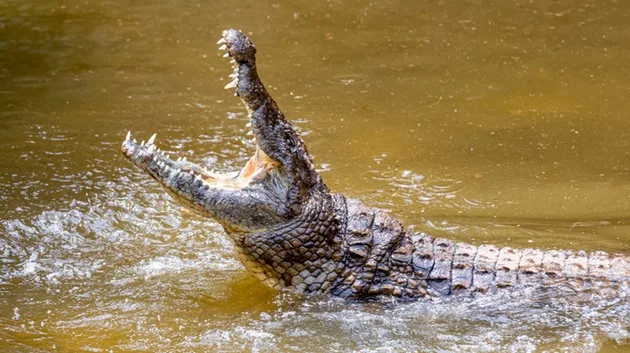
(NEW YORK) — The recent identification of fossils from a heavily armored ancient crocodile ancestor species, known as aetosaurs, provides a glimpse into our world 215 million years ago.
The study, led by researchers at the University of Texas at Austin and published in the journal The Anatomical Record earlier this year, announces a new aetosaur species: Garzapelta muelleri.
Aetosaurs are a species likened to modern crocodiles that lived during the Triassic Period, 229 million to 200 million years ago, which pre-dates the Jurassic Period, according to researchers, who further note aetosaur fossils have been discovered on every continent except Antarctica and Australia.
Garzapelta muelleri’s fossilized dorsal carapace – the hard, armored plating that covered its back – is 70% complete, according to researchers, with major pieces from the neck and shoulder region to the end of its tail intact.
William Reyes, a doctoral student at the UT Jackson School of Geosciences who led the study, published in January, told Phys.org on Monday that the findings are remarkable because “Usually, you find very limited material.”
The exterior of Garzapelta’s skeleton is called the osteoderm, which is comprised of rock-hard plates and curved spikes both made of bone, according to the study.
“Take a crocodile from modern day, and turn it into an armadillo,” Reyes told the publication, describing the ancient creature.
The study determined that Garzapelta’s fossils date back 215 million years and that the species was largely omnivorous, contradictory to its modern cousin, the carnivorous crocodile.
The name Garzapelta muelleri is a nod to Garza County in northwest Texas, where the fossil was discovered, while “pelta” is the Latin word for shield, to signify the armor-like shell of the species. The second half of the name, muelleri, is a nod to Bill Mueller, the paleontologist who initially discovered the aetosaur’s fossilized skeleton.
To determine that Garzapelta is, in fact, a new species of aetosaur, researchers compared the skeleton with those of similar ancient aetosaurs.
“The carapace of G. muelleri exhibits a striking degree of similarity between that of the paratypothoracin Rioarribasuchus chamaensis and desmatosuchins,” researchers said in the study.
However, the unique qualities of Garzapelta’s skeleton, from the formation of the osteoderm plates to the distinct markings and ridges on the species’ bones, make it distinctly different from its aetosaur relatives, according to the study.
“Convergence of the osteoderms across distantly related aetosaurs has been noted before, but the carapace of Garzapelta muelleri is the best example of it and shows to what extent it can happen and the problems it causes in our phylogenetic analyses,” Reyes told Phys.org.
Copyright © 2024, ABC Audio. All rights reserved.








